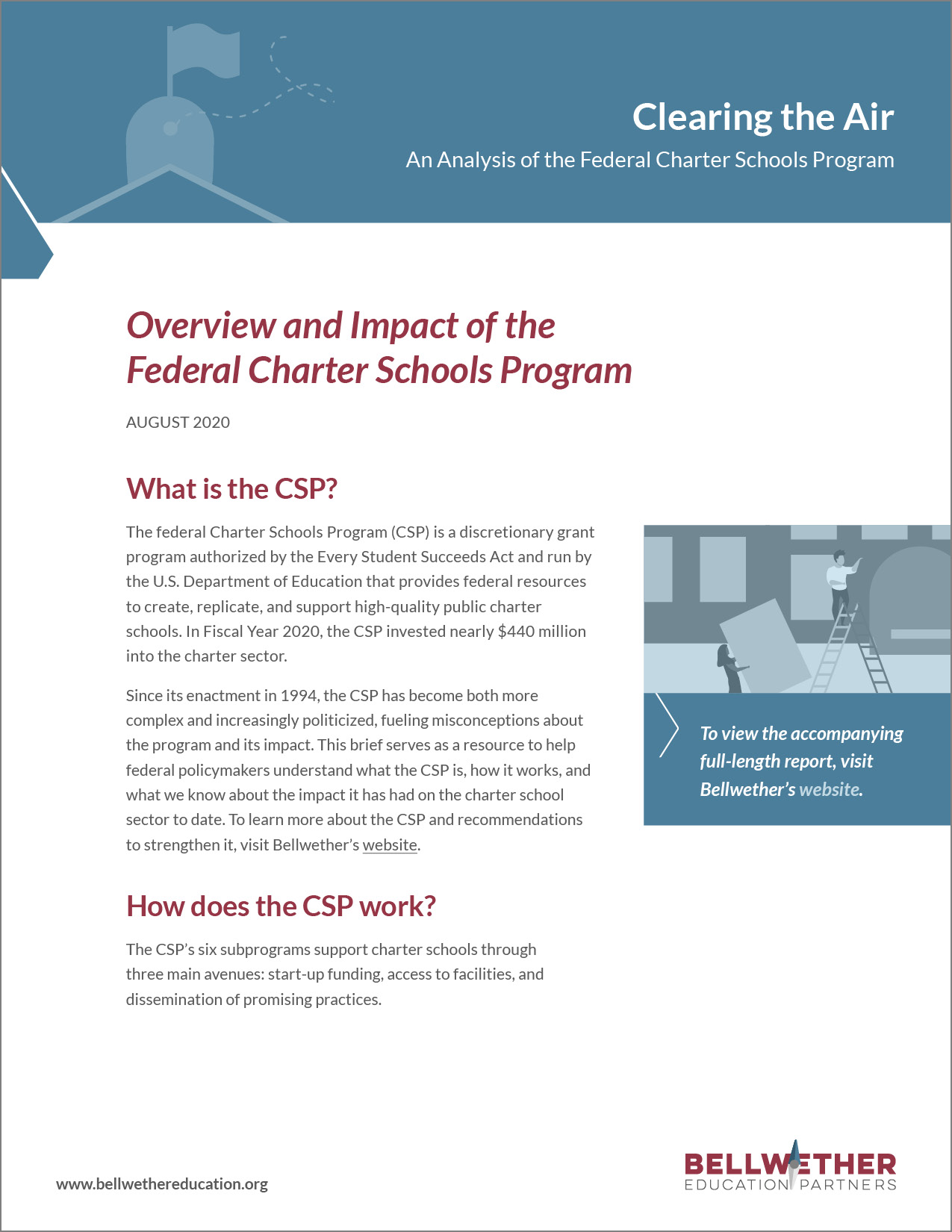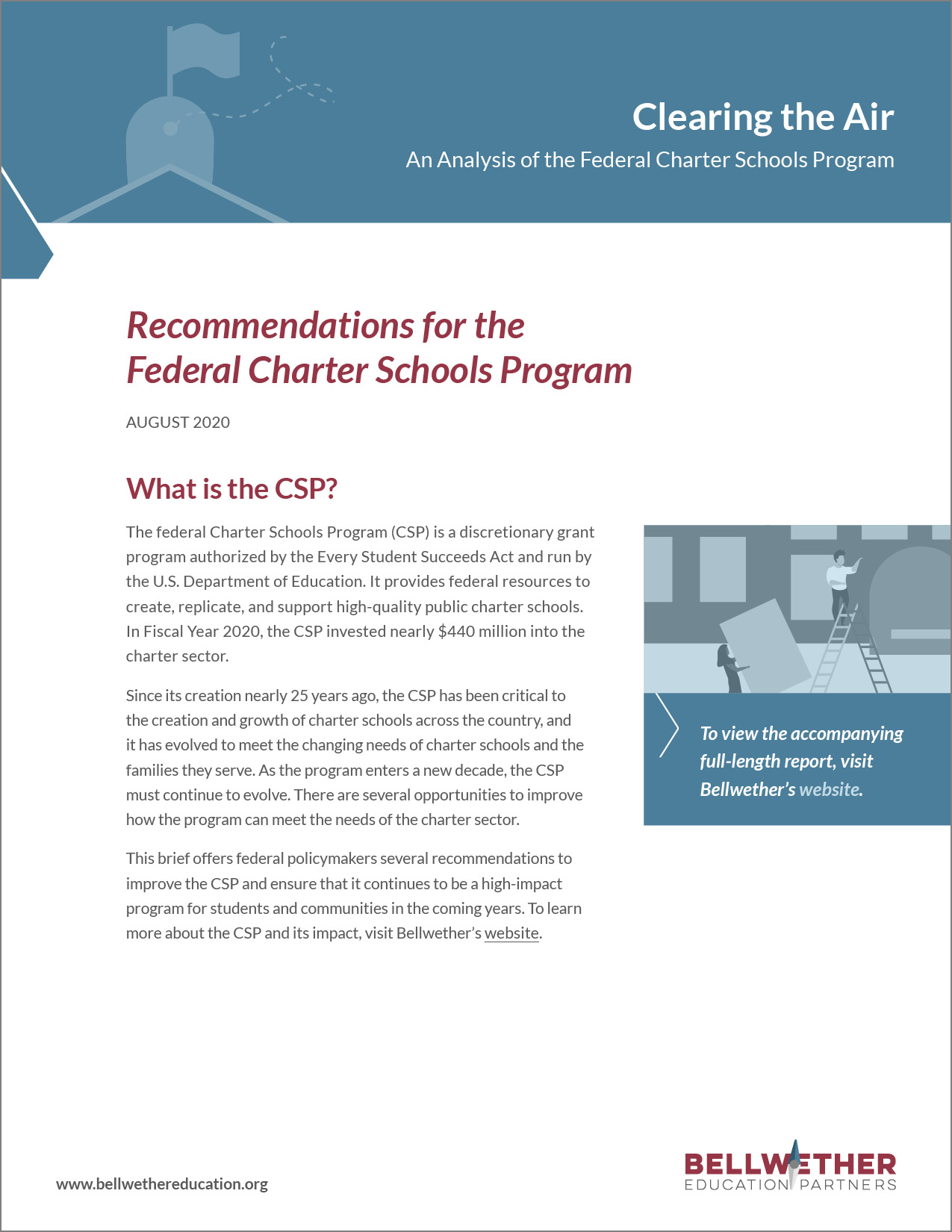Over the last 25 years, the federal Charter Schools Program (CSP) has invested nearly $5.3 billion into the charter school sector, directing funds to schools in 43 states, D.C., and Puerto Rico. Approximately 60% of students in CSP grantee schools are from low-income backgrounds and 64% are Black or Hispanic. The CSP has played a critical role in helping the charter sector grow to its current size, serving 3.3 million students in 7,500 schools nationwide.
“Clearing the Air: An Analysis of the Federal Charter Schools Program” offers an in-depth analysis of the CSP and how it has evolved to better meet the needs of charter schools and the families and communities they serve. For example, while Congress and secretaries of education have consistently maintained the CSP’s focus on high-need students, resources have focused on different subgroups of students over time, including low-income students, rural students, Native American students, and students at risk of not graduating from high school.
In addition to looking back at how the CSP has evolved over time, this new report provides recommendations for federal lawmakers to strengthen the program and ensure it continues to meet the needs of families and communities:
- Continue to support charter schools’ access to facilities, with an emphasis on incentivizing per-pupil or other facilities allocations at the state level
- Continue to support charter school models that serve high-need student populations
- Find new ways to address barriers to equitable access, including enrollment processes and transportation
- Assert and protect innovation as a central goal of the CSP
- Better measure, capture, and communicate the CSP’s impact
Two additional short resources accompany this report, offering a summary of the CSP and its impact and recommendations for strengthening it.
Download the full report here or read it in the viewer below.

